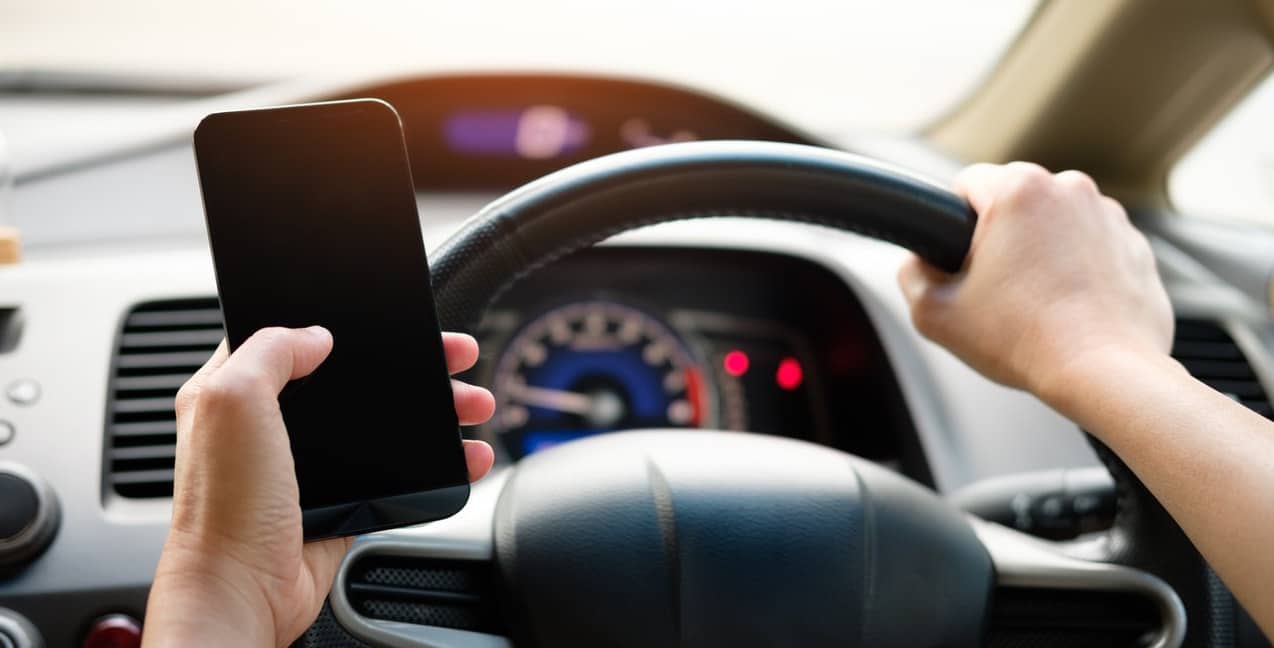Distracted driving is one of the top dangers on the road, even higher than drunk driving and road rage. It is estimated that 3,500 people die each year from accidents involving distracted driving. Talking on a cell phone, using a navigation system, texting, and other behaviors are dangerously distracting to drivers and are an increasing cause of crashes. While drivers themselves recognize and understand the potential danger in these behaviors, many continue to participate in them.
AAA, the automobile association, has been working for several years now to increase understanding of the consequences and negative effects associated with distracted driving behaviors, in an attempt to curb or eliminate the activity. Their Foundation for Traffic Safety produces brochures, PSA campaigns, member surveys, social media outreach and driver education classes, among other attempts to educate and curb this dangerous behavior. They even offer a distracted driving road test, which offers eye-opening confirmation about how severe the distractions are through devices and screens we utilize while driving. In this post, we’ll talk about AAA’s distracted driving road test and what lessons can be learned from it.
THE AAA TEST
Hubris is really at the heart of all distracted driving. The feeling that “other people are distracted when they use their phones while driving, but I’m not” is a fallacy. No human is superior to another in such a way that they won’t be distracted by something that takes their eyes off the road, whether it’s using a GPS system, eating a sandwich or dealing with fighting kids in the back. All are potential contributors to very serious accidents, with sometimes devastating consequences.
In AAA’s distracted driving road test, the driver is outfitted with a light and a buzzer that simulate incidents on the road that would require their attention – in other words, a light or buzzer goes off when they should pull focus from what they are doing and react. In the test, that reaction is to click a button on the steering wheel that has been specially equipped to track reactions during the test. Sounds simple enough, right? The light comes on, or the buzzer goes off, and you tap the button.
At first, reactions seem simple to manage. You drive slowly around a track and are asked to repeat a series of numbers, while reacting to the buzzer and the light accordingly. But then the tester begins to add on task after task, via use of supposedly “hands-free” navigation systems that are built in, or via advanced systems like Apple CarPlay or Google Android Auto.
The driver has to ask for simple directions or briefly use the touch screen to perform these tasks. The result? Before long, it’s complete overload. Even with these hands-free systems designed to respond faster to driver commands, there are so many options and systems these days that drivers can easily and quickly become overwhelmed by even the simplest task, missing the “buzzer and light” from the road that require your full attention and missing tap after tap on the steering wheel to acknowledge those alerts. In real life, this is when accidents happen. Looking at the phone, dialing up directions or Googling the name of a business. You miss that stop sign or drift into a car in the next lane, and tragedy occurs.
AREN’T NEW SYSTEMS BETTER?
The “new and improved” navigation systems in cars, also called “infotainment” systems, have gotten more and more complex. Despite the clear need to simplify the number of tasks a driver should be participating in while driving, there are dozens of dials and screens to navigate, whether you’re controlling the radio, the climate system, searching for the hours of a nearby restaurant, getting directions to a friend’s house, sending texts or making calls.
AAA, in conjunction with the University of Utah, has rated different cars’ infotainment systems on their level of complexity and demand on drivers. If you are planning on buying a new car, picking a vehicle with an easy-to-use, simple system is now an important consideration in the car-buying experience. Regardless of the system, even the easiest to use creates “moderate demand” for the driver, and none were rated as “low demand.” Navigation (maps/directions) proved to be the task with highest demand for driver time.
Best practice? Program directions before you leave. If you get lost or must change directions, pull off the road or highway to use the navigation system.
OTHER CAUSES OF DISTRACTED DRIVING
Texting or using a phone automatically comes to mind when you think about distracted driving, but it’s important to understand all the different types, and what factors into that behavior, so you can take steps to curb both your own behavior and that of anyone you ride with. Taking your eyes off the road even for two seconds doubles your risk of a crash. AAA provides a helpful graphic indicating the types of distracted driving and even the overlap between types: eyes off the road, hands off the wheel, and mind off driving.
Distracted driving includes looking at billboards, rubbernecking at crashes, changing CDs in the radio, reaching for items you drop in the car. Educate yourself on all the dangers so that you can work to prevent becoming a distracted driving car crash statistic.




